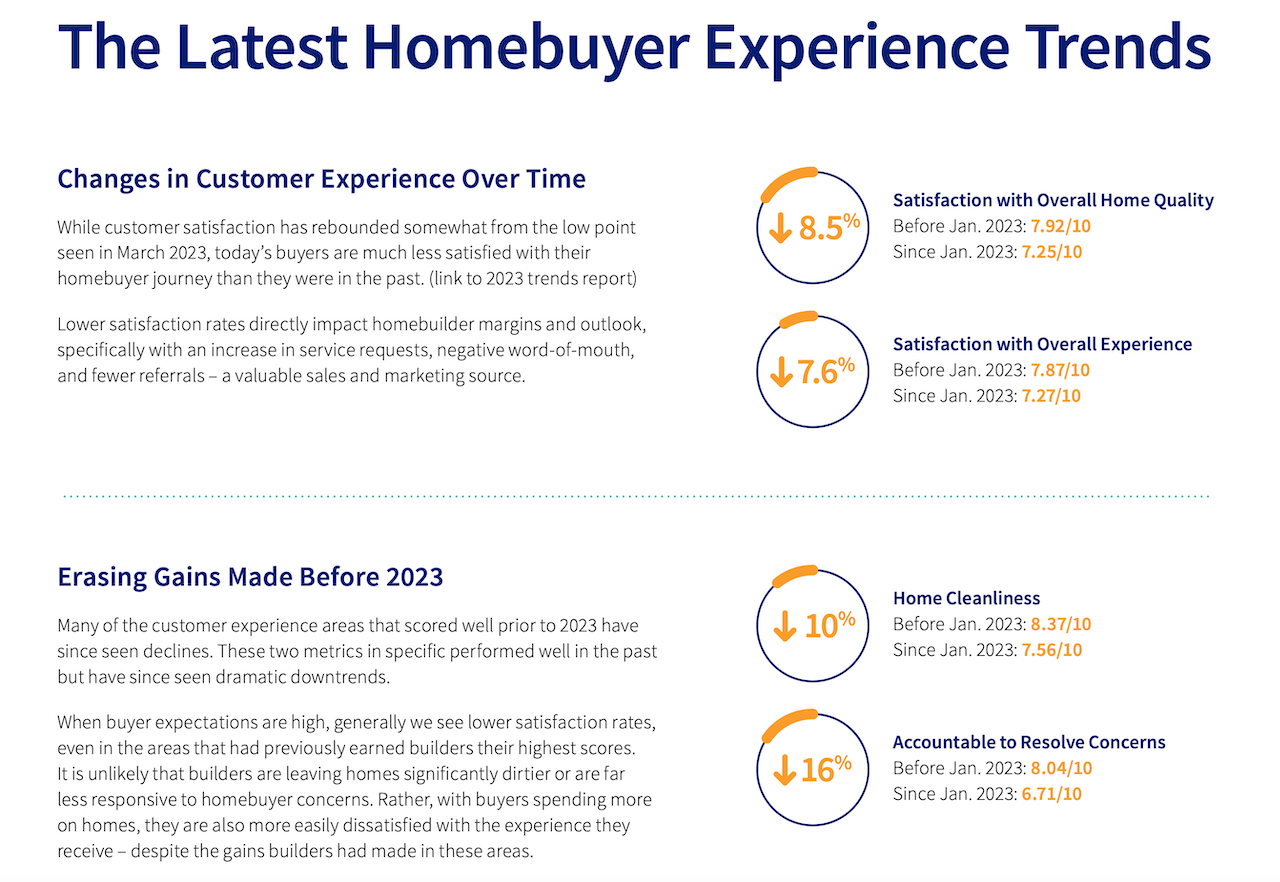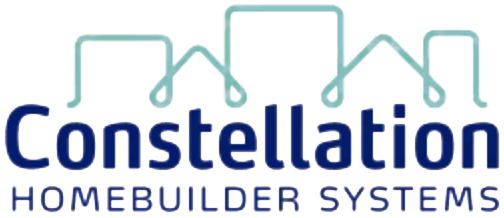Technology
Housing Enters Dig-Deeper Patch As Economy Sends Up Red Flags
Call this latter 2024, next patch of new-home marketing and selling – probably through year-end 2024 – the "dig deeper" period of the post-pandemic-defined new-home selling cycle.

Spiraling Wall Street losses, plunging investor confidence, and skyrocketing volatility following last week's weaker-than-expected employment report remind us of the conditionality of new-home demand.
They also remind us of something we know all too well about new home sales but regularly forget during strong market cycles when new-home demand eclipses supply:
Order-taking and selling are not the same.
Call this latter 2024, next patch of new-home marketing and selling – probably through year-end 2024 – the "dig deeper" period of the post-pandemic-defined new-home selling cycle. During that dig deeper stretch, marketing and sales associates and their business leaders must adopt survival guide tactics that set them apart, not just from other new-home developer rivals but from alternatives ranging from surging existing home options to rentals, both single- and multi-family.
One such tactic – zeroing in on your specific customer's needs, preferences, values, and experiences – bubbles up as a dig-deeper non-negotiable.
Why?
We know that the U.S. demand for shelter is structural. Demographics and a decade or more of underbuilding new homes make it so. Further, demand for new-home offerings may masquerade as structural – especially when a straight flush of demographics, dramatic underbuilding, a strong jobs economy, record-high mortgage holder equity of $17.6 trillion, and heady Wall Street investment gains feed on one another's momentum.
Conflating "we need more new homes" with 1,000 or more going-concern homebuilders' business prosperity and resiliency sharpens recognition among homebuilding operations teams of that yawning difference between order-taking and selling new homes.

Their equivalency is conditional, and a spreading "now-is-a-bad-time-to-buy" mentality – not only contained to price- and interest-rate-sensitive lower-price-tier home seekers, but now spooling up among higher-income consumer households considered to be more immune to higher interest rates and higher home prices – reveals just how conditional so-called structural demand can be.
It's in this limbo of volatility, financial stress, and economic uncertainty that homebuilders must truly tap marketing and selling competency, and a first, necessary step comes with improved clarity into the turbulence consumer households in most economic brackets have been weathering in the pandemic and post-pandemic era.
To that end, Constellation HomeBuilder Systems has fielded a range of fresh data on homebuyer experience trends from its Homeowner Central and CustomerInsight knowledge bases. These virtually real-time consumer experience trends can serve as an invaluable real-time marketing and sales tool in high volatility and pervasive, accelerating uncertainty and bumpiness.
Survival guide tactic No. 1: There's no time like the present to fully focus on your buyer's shopping and purchase experience, and there's no present time like real time to fully recognize what home seekers, shoppers, and buyers are actually experiencing.

Key Takeaways
Understand and Mitigate Buyer Expectations
Data Point: Survey results indicate that customer satisfaction upon move-in reached a historic low in March 2023, but has moderately improved since then. This highlights the importance of managing expectations and communication throughout the homebuying process to improve satisfaction rates.
Recommendation:
Addressing communication issues is crucial, as it stands out as the leading cause of poor customer satisfaction, more than construction quality."
Leverage Technology for Enhanced Communication
Data Point: Builders that utilized technology for communication and engagement saw significant improvements in satisfaction scores. For instance, home cleanliness scores improved from 7.51/10 in March 2023, to 7.87/10 now, and builder appreciation scores rose from 6.34/10 in March 2023 to 7.30/10 now.
Recommendation:
Builders who embrace technology to modernize customer experience see happier homebuyers and lower service request management costs.
Improved communication, buyers receive ongoing updates during construction on the project schedule, they feel appreciated by the builder, and rate this outreach as the most positive part of their experience after moving in."
Real-Time Data Utilization
Data Point: The sharp decline and rise of customer satisfaction metrics show us why frequent access to real-time data is so critical. When buyers faced emerging negativity in late 2022 and early 2023, builders could see that change was needed, and accessing data helped tell them how and where they should focus.
Recommendation:
Accessing and responding to customer experience data lets builders quickly observe trends and opportunities, leading to better satisfaction rates and more homebuyer referrals.
This has led to many of the gains since, showing how valuable ongoing data is to optimize the homebuyer experience."
Focus on Continuous Improvement
Data Point: Upon move-in and up to a year later, scores correlated well through each of our metrics, whether high or low. This shows the importance of making improvements, as small changes can lead to large, widespread benefits.
Recommendation:
Small improvements in the homebuyer experience can lead to widespread benefits across all metrics.
Ensuring happy buyers in one aspect of their experience can pay off across the board."
Prepare for Economic Shifts
Data Point: Buyers moving into their new homes are showing rapid gains in satisfaction. They are feeling confident in their move-in date, are appreciated by the homebuilder, and are more likely to make referrals compared to the March 2023 lows.
Recommendation:
By focusing on improving the homebuyer experience now, builders can position themselves to better navigate future economic uncertainties and capitalize on opportunities when conditions improve.
With economic shock from rising inflation and interest rates causing a sudden collapse in customer satisfaction, homebuyer experience metrics could be poised to only improve from here."
Added to and in alignment with these recommendations, invaluable – and timely – perspective comes through in this recent installment of customer experience and customer care sage Joseph Michelli's blog on "Walking Your Talk: Cultivating Authentic Customer Service."
- Commit to Impassioned Service:Michelli’s Insight: "Foster a culture where employees are passionate about delivering exceptional service. Encourage them to go above and beyond to meet customer needs and exceed expectations."Integration: As builders strive to improve customer satisfaction, they must cultivate a culture of impassioned service. This means going beyond transactional interactions to create memorable, meaningful experiences for homebuyers.
- Promote Transparent Communication:Michelli’s Insight: "Ensure that your communication with customers is clear and honest. Straight-forward communication builds trust and shows that you value their business."Integration: Transparent communication, as highlighted by Constellation’s data, is a critical component in improving satisfaction. Builders should ensure that their communication is frequent but also clear and honest, fostering trust and confidence among buyers.
- Embrace Differences and Weirdness:Michelli’s Insight: "Celebrate the unique qualities of your employees and customers. Create an inclusive environment where diversity is appreciated and leveraged for creativity and innovation."Integration: Embracing diversity and creating an inclusive environment can enhance creativity and innovation in solving customer problems. This approach can lead to unique and tailored solutions that resonate deeply with homebuyers.
- Engage and Connect:Michelli’s Insight: "Strive to build emotional connections with your employees and customers. This engagement leads to a more loyal and dedicated customer base."Integration: Building emotional connections with homebuyers can lead to higher satisfaction and more referrals. By understanding and addressing the emotional needs of buyers, builders can foster deeper loyalty and long-term relationships.
- Be Creative and Present:Michelli’s Insight: "Encourage creativity in solving customer problems. Being present, attentive, and resourceful shows customers that you genuinely care about them and are innovating ways to improve their experience."Integration: Builders should encourage creativity in their teams and be present in their interactions with buyers. This attentiveness and resourcefulness can significantly enhance the buyer experience, leading to higher satisfaction and stronger referrals.
Incorporating these insights and recommendations into your marketing and sales strategies will not only help you navigate the current economic turbulence but also position your company for long-term success. By prioritizing customer and team member experience and leveraging real-time data, you can differentiate yourself in a competitive market and build stronger, more resilient relationships with your buyers.
Constellation provides fully-integrated or standalone software solutions expertly engineered to manage the complete ecosystem of a homebuilder’s business functions and growth.
MORE IN Technology
Lennar Taps Into Geothermal To Power New Colorado Homes
A major homebuilder's bet on geothermal heating and cooling for over 1,500 new Colorado homes could pave the way for mainstream adoption as buyers increasingly seek sustainable, energy-saving features.
AI Crushes Missing-Middle Time And Cost Curves Toward Affordability
Developing multifamily rental and for-sale properties takes time — sometimes years -- depending on a labyrinth of zoning rules and the whims of local jurisdictions.
Brandon Elliott’s Next Big Thing: An Uber-Style Building Trades Platform
After selling Elliott Homes to Meritage, the Gulfport, Miss.-based entrepreneur sets his sights on transforming trades with a logistics-tech startup that aims to make construction faster, smarter, and more affordable—starting with siding.


